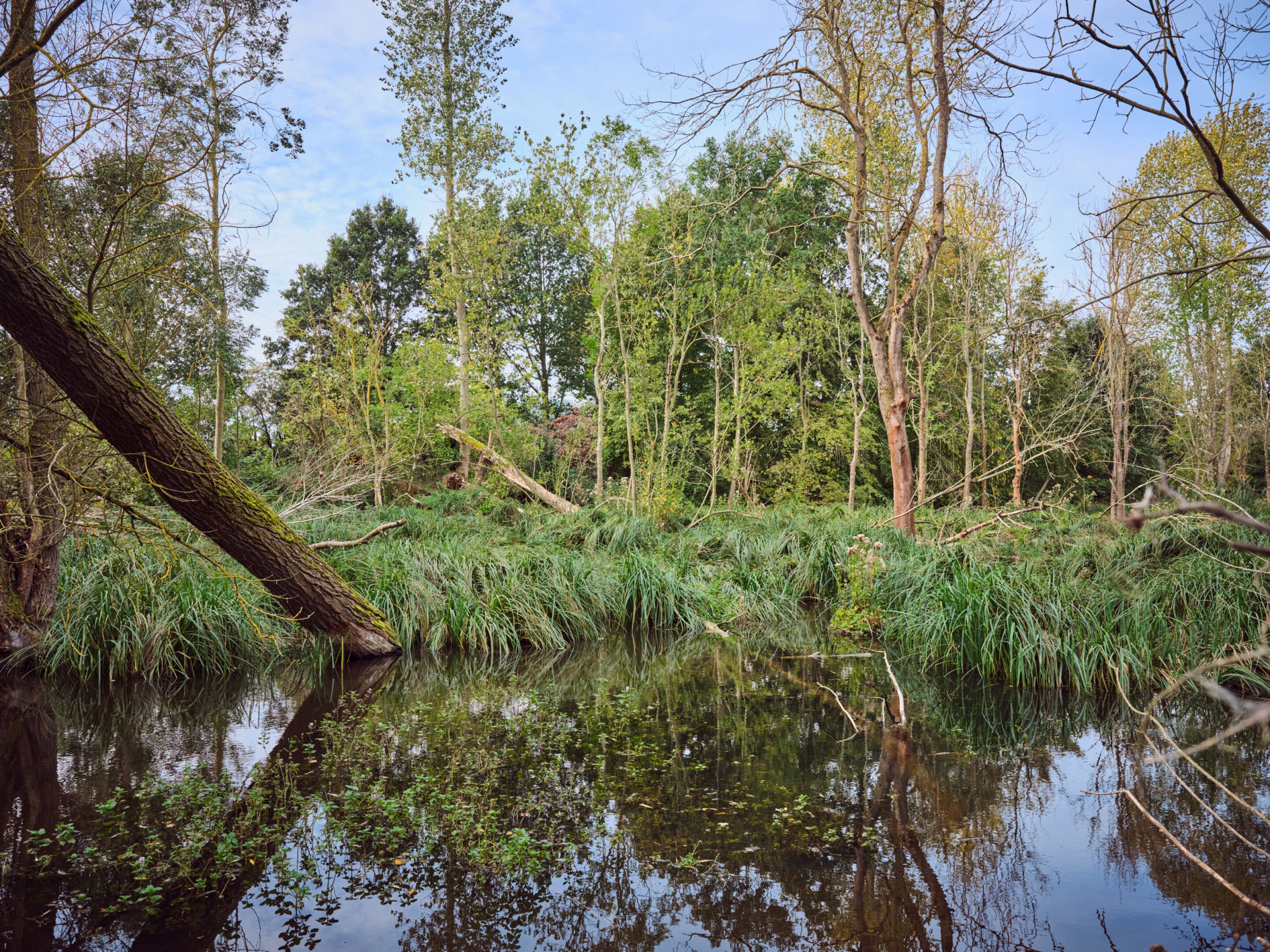Project Summary
Spains Hall Estate is a 2,000-acre estate in Essex which has been integrating environmental land management under its current Estate Manager, Archie Ruggles-Brise. In 2022 the Estate embarked on a 50+ year habitat creation programme and has been generating Biodiversity Net Gain (BNG) units for sale to local developers. The Estate plans to generate over 500 BNG units over 100 hectares.
The Estate was part of Natural England’s Biodiversity Net Gain pilot, which gave access to funding and project support including an ecologist to help develop a farm management plan and an external valuer to help with financial planning. The Estate is implementing a variety of interventions to create a diversity of habitat types including ponds, orchards, grasslands and wetlands.
Acknowledgements
With thanks for his time and insight for this case study:
Archie Ruggles-Brise Farmer, Estate Manager
Published 10/04/2024
How did Spains Hall Estate create a budget for the lifetime of the project?
To create a budget and financial model for its BNG projects, Spains Hall Estate, as part of Natural England’s BNG pilot secured the services of an external valuer (Charles Cowap) who created a framework to calculate expected tax liabilities alongside estate-derived operational costs. Inflation was calculated after working out a 30-year rolling average which resulted in the Estate applying 8.5-9% inflation on project costs.
The estimated investment radiness costs for the Estate’s project was estimated at £1000 to £1500 per hectare. Operational costs for establishment and maintenance vary by habitat and by area. Ruggles-Brise reckons that around 40%-50% of 30 year operational costs are likely to occur within the establishment phase . Monitoring costs pose a challenge given the uncertain nature of reporting and verification requirements with the new policy. The Estate acknowledges the potential expense of advanced monitoring technology like eDNA or bioacoustics, emphasising the importance of budgeting for such tools in future deals, but cautioning that benefit to cost should be considered carefully, particularly where there is still a lack of clarity as to whether such data will be accepted within mandatory reporting frameworks. The Estate’s monitoring and reporting plan aligns with Natural England’s proposed frequency — bi-annually for the first five years, followed by monitoring and reporting every five years (1, 3, 5, 10, 15, 20, 25 and 30).
To mitigate risks associated with habitat failure, the Estate incorporated a land or units buffer into its budget. Recognising the difficulty of implementing this buffer in smaller deals, a ‘lift and shift’ clause in contracts was introduced. This clause allows the Estate to identify alternative land at its own risk and expense if the initially identified land fails to perform or generate sufficient units. While the scale of the Estate aligns well with the lift and shift approach, smaller farms might encounter difficulty finding alternative land and may benefit from placing greater emphasis on a credits buffer in their deals, says Spains Hall Estate manager, Archie Ruggles-Brise.
Image by William Joshua Templeton
What is Spains Hall Estate’s selling strategy for BNG units?
Although Spains Hall Estate’s overall habitat management plan includes generating around 500 BNG units, the Estate is not beginning to establish all habitats and sell all its units in advance. If a plot of land which has been committed to BNG is already earning income, then the Estate will only begin establishing the habitat once a deal is in place. In areas where land is not being farmed (or used for agri-environment schemes) then BNG establishment work has often begun prior to a deal being secured. This approach ensures that the BNG income will substitute for income lost from changes in land management. The estate is therefore able to pursue a split-risk marketing strategy designed to harness the benefits arising from the temporal risk multiplier in the metric where appropriate, whilst also minimising upfront commitment and cost in other areas.
Ruggles-Brise found that the timings of payments that buyers prefer can vary depending on the size of the deal. For smaller deals, buyers typically prefer to pay upfront in a lump sum to discharge their planning obligations, whereas with larger deals, some buyers might consider an initial lump sum upfront followed by phased payments across the 30 year period. The Estate discusses buyer preferences when negotiating payment terms.
How does the project fit within longer-term planning for the farm?
Ruggles-Brise believes that engaging in nature markets projects now will provide both environmental and financial benefits to the wider farming business by increasing resilience to climate change, improving profitability of low-productivity sites and reducing the risk of creating negative externalities (unintended negative impacts) which could be taxed or enforced in the future.
Some farmers might be concerned about leaving their successors with obligations to nature areas that negatively impact their cash flows. Ruggles-Brise views the Estate’s BNG areas as being beneficial to his successors by increasing environmental resilience of the land while providing an additional income stream. Many of the BNG habitats can also still be managed agriculturally to some extent which helps maximise potential to remain eligible for Agricultural and Business Property Reliefs depending on the specific circumstances.
Lessons Learned
Ruggles-Brise shares that the highest BNG value habitats are not necessarily the best way to approach BNG project design even if they have potential to generate the most income. Rather, he says farmers should choose the changes that will produce an outcome that is environmentally appropriate, and will therefore allow land managers to be confident they can maintain them in the long term. Selecting habitats based on the amount of BNG units that can be sold raises the risk of committing to unachievable outcomes.
He also advises farmers to find a trusted ecologist who knows the land or similar land to determine appropriate changes which will benefit the wider farm. Technology can play a big part in planning and monitoring BNG projects, but experienced ecological boots on the ground remains a vital component.
Finally, he says if as a farmer you are interested in BNG, make sure you would be comfortable with permanent land use change to the plots you are considering, as it’s still not clear what happens at the end of a 30 year BNG agreement. A good way to test this is to consider whether you would be willing to plant a woodland in your chosen plot. If you are comfortable with that sort of permanent land use change, then BNG may be a good option for you.
Image by William Joshua Templeton


